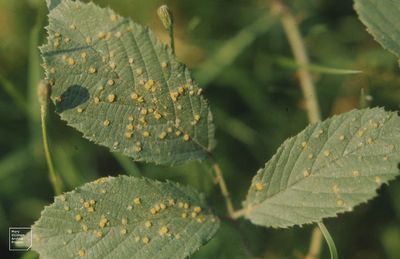What is Orange Bramble Rust?
Orange rust is a disease that can infect blackberries, black and purple raspberries, and dewberries. Red raspberries are immune. The disease is caused by two different species of fungus. One, Arthuriomyces peckianus, is more common in the northeastern U.S. and affects all the types of brambles listed above. The other, Gymnoconia nitens, is more common in the southern U.S. and mostly affects blackberries. Orange rust infection relies on very wet, relatively cool conditions. Temperatures have to be between 43 and 72 degrees F. (6-22 C.), and 12 rainy or wet days in a row are ideal. These conditions almost always occur during the spring and autumn, so those are the seasons to look out for symptoms. First, new growth comes in spindly and stunted. Next comes the most obvious sign of infection – the appearance of bright orange blisters covering the undersides of the leaves. This is how the disease gets its name. As temperatures rise, the plant may seem to “get over” the infection. It’s still there, though, and will spread to other plants if not stopped.
How to Manage Orange Rust in Brambles
Unfortunately, there is no way to cure brambles with orange rust. Once a plant becomes infected, it stays infected for the rest of its life. It will continue to live for several years, producing less and less fruit, while it spreads the fungus to its neighbors. Due to this, it is important to remove and destroy any plants that show symptoms. In the spring, especially if it is cool and wet, look through your bramble patch for signs of the disease. Remove any infected plants, and spray the remaining plants with fungicide. If you have had orange rust infections in the past, look again the autumn for symptoms on buds and newly emerging shoots.
